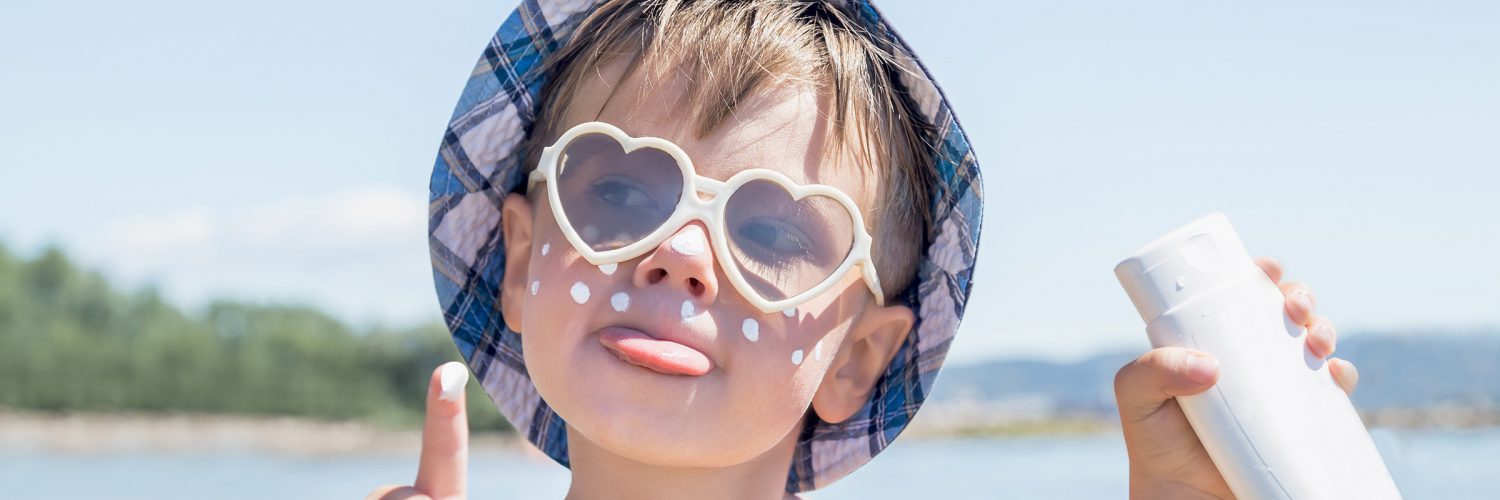While this summer looks different from most, spending time (safely distanced) outside continues to be beneficial for our mental and physical well-being. However, with all this extra time in your backyard, at the beach or pool, or exploring local parks, it is important to remember to protect your skin from the sun and make sunscreen part of your daily routine.
Even if you are not spending hours at a time outside, sun exposure adds up day after day. This can become evident on our skin in the form of wrinkles and age spots, as well as increase your chances of developing skin cancer. Check out these frequently asked questions and tips to help defend against skin damage.
What is ultraviolet radiation?
Ultraviolet radiation is emitted from the sun. There are two types of ultraviolet radiation that can cause damage to the skin: UVA and UVB. UVA rays aren’t absorbed by the ozone layer and penetrate deep into the skin; they are known to contribute to premature aging and skin cancer. UVB rays are partially absorbed by the ozone layer and are the main cause of sunburn. Be sure to choose a sunscreen that provides protection against UVA and UVB rays.
What are some ways I can protect my skin?
- Avoid direct sun exposure as much as possible during peak UV radiation hours, between 10 AM and 2 PM. Staying in the shade is the best way to limit your UV exposure.
- Wear sunglasses with total UV protection to protect your eyes.
- Choose a wide-brimmed hat (3” or more) that covers and protects areas like your head, neck, face, and ears.
- Cover up with light/loose clothing (so that you still get some cover from the sun, but don’t get too hot). Tightly woven fabrics and light, vivid colors are best.
- If you already have sunburn, wear long-sleeved shirts and pants to prevent further skin damage.
- Apply sunscreen!
What should I look for on the sunscreen label?
- Sun Protection Factor (SPF): Sun protection factor refers to the amount of sunburn protection that a sunscreen can provide to the average user. Pick a sunscreen with an SPF of at least 30 and be sure to reapply it at least every two hours, as well as after swimming or sweating. SPF only refers to protection against UVB rays.
- Broad spectrum: Sunscreens that are “broad spectrum” protect against UVB and UVA rays. Since both types of rays can damage your skin and contribute to skin cancer, make sure that you choose a sunscreen that has the “broad spectrum” label.
- Water resistant: Water-resistant sunscreens are ideal if you plan to do water activities or other activities where you may sweat. If a sunscreen bottle has the label “water resistant,” check to see how long the resistance lasts. No sunscreens are waterproof, and they must be reapplied at least every two hours.
- Expiration date: If you have sunscreen left over from last summer, be sure to check the expiration date to make sure it is still effective. If you apply expired sunscreen, it may be as if you applied nothing at all.
- Ingredients: Because of the amount and frequency in which sunscreen is applied, it’s important to be aware of the ingredients and their potential impact on our health. The Food and Drug Administration and Environmental Working Group recommend looking for sunscreens that include zinc oxide or titanium oxide. These ingredients are considered safe for skin as well as the environment.
When should you apply sunscreen?
Slather on the sunscreen at least 30 minutes before spending time outdoors. Reapply at least every 2 hours after first application, or more if you are sweating or swimming.
How much should you use?
It can be easy to underestimate how much you need to cover your whole body. A good estimate for the amount is roughly the size of a golf ball.
When should I see my doctor?
Perform self-examinations on your skin regularly to become familiar with any existing growths (such as moles) and to notice any changes or new growths.
You should see a dermatologist once a year for a skin checkup, or more often if recommended based on your history. Note: Don’t wear nail or toenail polish to the appointment. Skin cancer can develop under the nails since they are on top of skin, and you’ll want these areas to be visible to the doctor.
Get outside and enjoy the sunshine and fresh air, but stay safe by taking steps to protect your skin.
Check out any of these resources for more information about sun safety:



